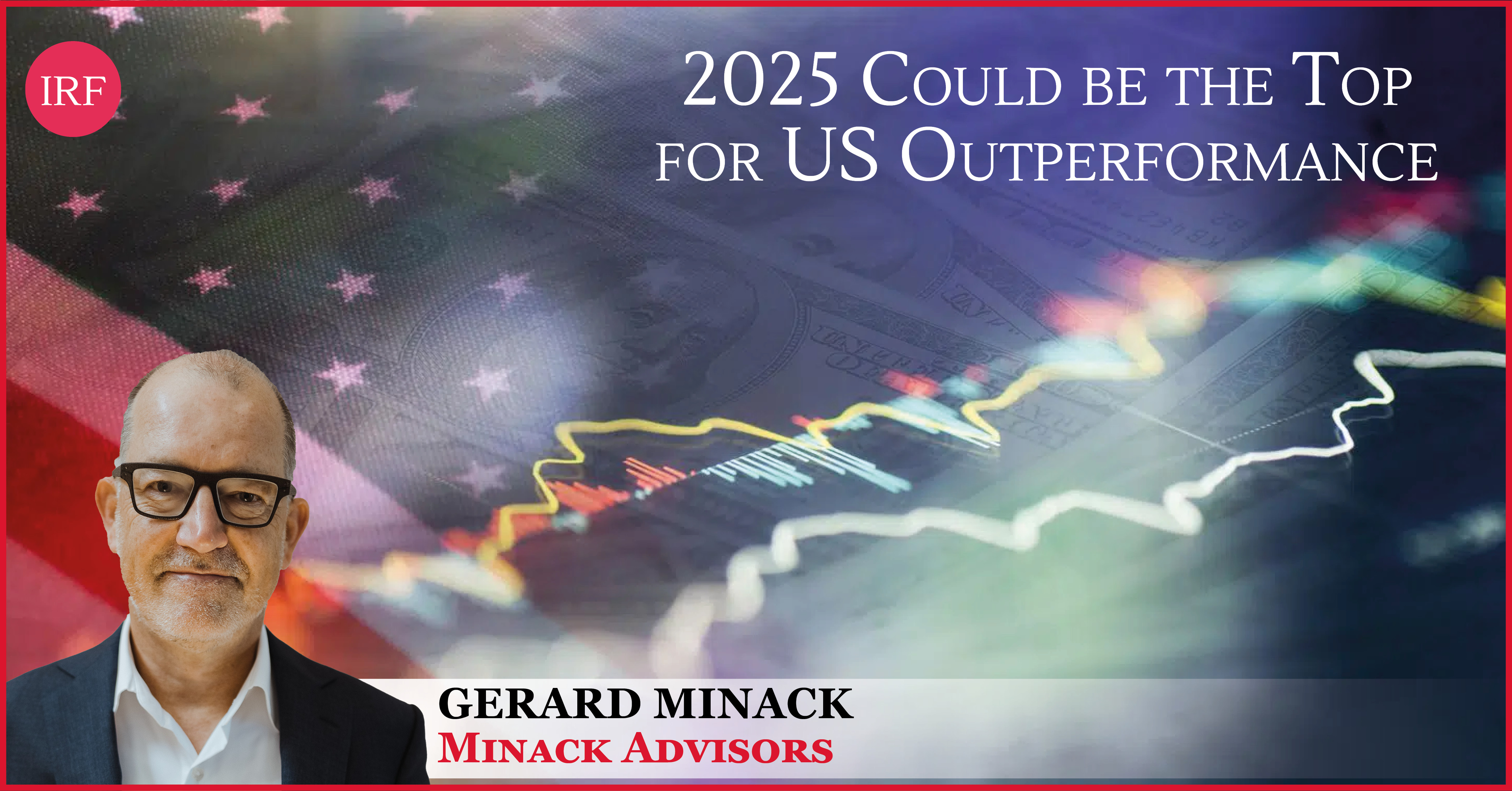2025 Could be the Top for US Outperformance
Minack Advisors
Tue 04 Feb 2025 - 16:00 GMT / 11:00 EST
Summary
He expects a U.S.-led risk asset setback in early 2025, driven by three key risks: rising rates, Trump-related uncertainties, and AI-sector concerns. Starting with rates, he highlights upside risks to U.S. yields, stressing that expensive equities will struggle if rates rise. Markets previously expected aggressive Fed rate cuts but have adjusted to a higher neutral rate, leading to a sharp shift in long-end yields. Historical trends suggest that in normal soft landings, the yield curve steepens as short rates fall faster than long rates. However, this cycle started with an inverted curve, and as markets realized deep cuts wouldn’t materialize, long-end rates surged instead.
Minack predicts that if the Fed tightens again in 2026, markets will start pricing it in this year, pushing the 10-year yield beyond 5%, putting more pressure on valuations. The U.S. equity market is already stretched, and a rate-driven correction could be likely. Trump poses another risk. While markets are optimistic about tax cuts and deregulation, Minack warns that negative policies—tariffs, immigration restrictions—can be enacted quickly via executive order, while pro-growth measures require legislation. AI stocks may disappoint. Despite massive CapEx spending by tech giants, Minack argues AI lacks the monopoly-like advantages of past tech revolutions, making returns on investment lower than expected. A “show-me-the-money” moment in 2025 could lead to disillusionment, further pressuring U.S. equities.
The Fed eased policy despite inflation and wage growth being above target, relying on signs of labor market loosening. However, recent data hints at wage growth picking up, which could challenge rate-cut expectations. The U.S. stock market's outperformance has been driven by superior earnings, particularly from the "Magnificent Seven" tech firms. Meanwhile, global markets have lagged due to past economic imbalances but may now return to sustainable growth. Japan remains undervalued, while China struggles to convert GDP growth into earnings. A shift in global economic strength could drive non-U.S. markets to outperform, potentially marking a peak in U.S. dominance.
Topics
US equity out-performance from 2009 to 2017 was driven solely by superior EPS growth. Since 2017 it increasingly has been driven by valuation rerating. Since October the narrow Mag 7 rally has widened on the back of Trump trade optimism
The US valuation premium will face several tests in 2025. First, rising long-end rates. Second, can AI deliver on the hype. Third, with Trump 47 be net positive for equities
Other markets – notably Japan – are likely to offer superior returns over the medium term
